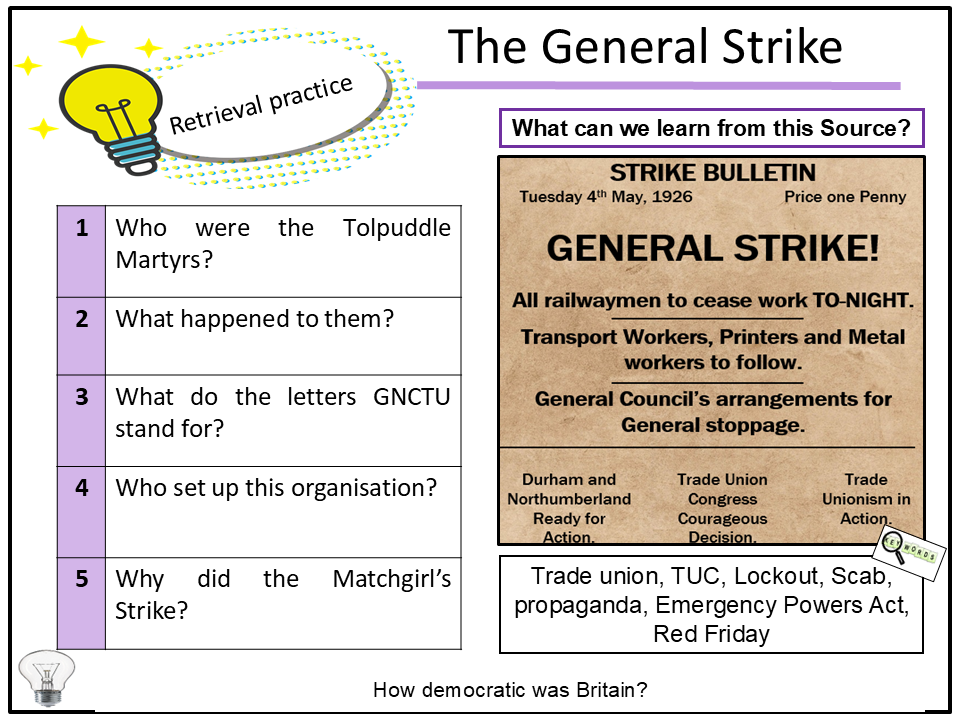


Bring the drama and disruption of one of Britain’s most pivotal industrial events to life with this fully resourced, accessible, and engaging lesson on the General Strike of 1926.
This lesson introduces students to the concept of a General Strike, when multiple industries stop work to support a shared cause, threatening to grind the nation to a halt. Students will explore why the 1926 strike was not just about miners’ wages but about the broader struggle between labour and government, and the limits of protest in a democratic society.
Pupils examine the real impact of the strike on transport, food supply, newspapers, and communication. Through engaging tasks and historical sources, they will consider how the strike disrupted ordinary lives and how the fear of chaos shaped public opinion.
This resource explores how Prime Minister Stanley Baldwin prepared for and responded to the strike with military-like precision: using volunteer workers, mobilising the police and army, and launching the British Gazette to control the media narrative. Students will analyse the balance between maintaining order and suppressing dissent.
Through a structured debate or source analysis task, learners weigh up the perspectives of striking workers, trade union leaders, the government, and the press. Why did some see the strike as a bold stand for workers’ rights and others as a threat to democracy itself?
Students will reflect on why the strike collapsed after nine days, considering factors like lack of unity, government planning, media control, and public support. This analysis reveals deeper truths about the power structures of 1920s Britain and opens a wider discussion about class tensions and the limits of protest.
This lesson includes:
An engaging PowerPoint with step-by-step guidance
Source analysis tasks using modern and contemporary accounts
A timeline to build chronological understanding
Retrieval quizzes and plenary tasks to consolidate learning
Differentiated worksheets to support all learners
Why teachers will love this resource:
Fully planned and resourced. Just print or upload and teach
Builds core Key Stage 3 skills such as causation, interpretation and source analysis
Prepares students for GCSE themes like power, monarchy, and Parliament
Encourages critical thinking and balanced historical judgement
Something went wrong, please try again later.
This resource hasn't been reviewed yet
To ensure quality for our reviews, only customers who have purchased this resource can review it
to let us know if it violates our terms and conditions.
Our customer service team will review your report and will be in touch.